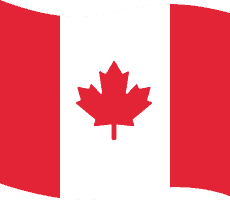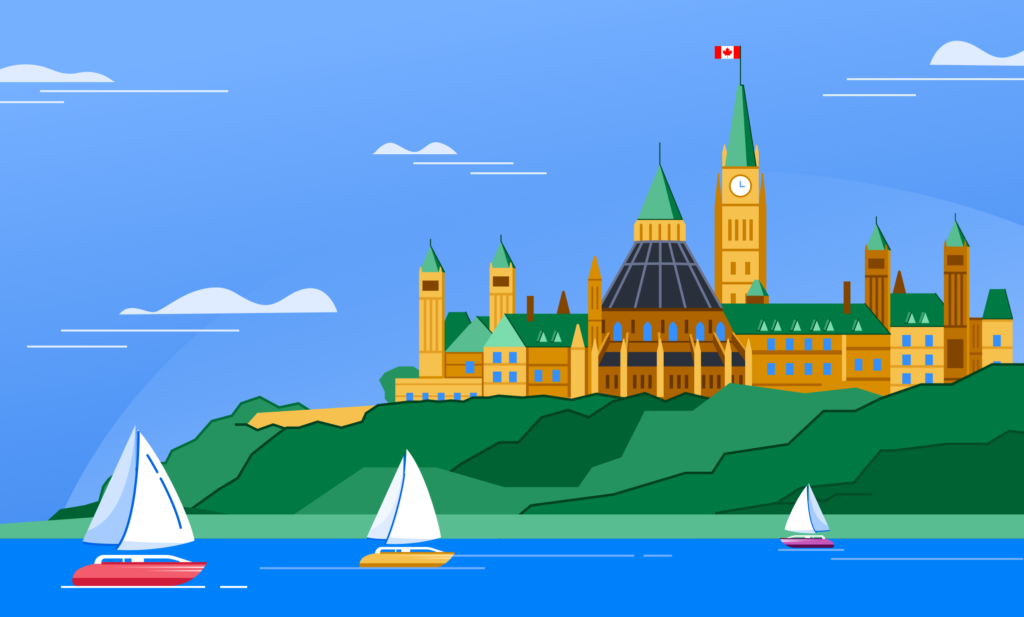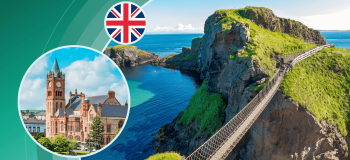The numbers are in! Canada recently announced its 2022–2024 Immigration Levels Plan. The Canadian government is looking to welcome over 430,000 new immigrants each year between 2022 and 2024, which is the highest number in the country’s history and equivalent to about 1% of Canada’s overall population.
Canada’s immigration objectives are designed to help refugees, reunite families, and strengthen the economy. Today, we’ll be exploring the Immigration Levels Plan and summarizing immigration pathways at the provincial and territorial level.

Summary of Canada’s Immigration Level Plans
Every year, Immigration, Refugees and Citizenship Canada (IRCC) releases a new Immigration Levels Plan which is used to guide its operations. From 2022 to 2024, Canada will target the following number of new immigrant landings:
- 2022: 431,645 permanent residents
- 2023: 447,055 permanent residents
- 2024: 451,000 permanent residents
Why Canada Needs New Immigrants
Canada welcomes high levels of immigration in order to strengthen its economy. Not only does Canada have one of the world’s oldest populations, but it also has one of the world’s lowest birth rates. This imbalance creates fiscal and economic strain. To address the pressures caused by a lower birth rate and older population, Canada has been increasing its immigration levels since the late 1980s to grow the nation’s economy, population, and labour force. Today, Canada depends on immigration for the bulk of its population and economic growth.

What This Means For International Students
Canada’s new Immigration Levels Plan is excellent news for international students looking for a route to permanent immigration to Canada. International students studying in Canada may be eligible for a post-graduation work permit (PGWP). While PGWP holders can temporarily stay in Canada to work, it doesn’t automatically lead to permanent residency. Instead, international students who are seeking permanent residence must apply for Canadian immigration. One pathway is the Express Entry route, while others may qualify under the Provincial Nominee Program (PNP). The high numbers set by the Immigration Levels Plan mean that there is a greater chance for international students to gain permanent residence through these various pathways.
Immigrant Categories
Below we’ll break down the planned permanent resident admissions by each of the four immigrant categories.
Economic
- Federal Highly Skilled
- Federal Economic Public Policies
- Federal Business
- Economic Pilots and Caregivers
- Atlantic Immigration Program
- Provincial Nominee Program
- Quebec Skilled Workers and Business
Family
- Spouses, Partners, and Children
- Parents and Grandparents
Refugees and Protected Person
- Protected Person in Canada and Dependents Abroad
- Resettled Refugees – Government-Assisted
- Resettled Refugees – Privately Sponsored
- Resettled Refugees – Blended Visa Office-Referred
Humanitarian and Other
- Humanitarian & Compassionate and Other

Provincial and Territorial Immigration Pathways
Below we’ll explore in more detail what immigration pathways are available by province and territory.
Alberta (AB)
The Alberta Advantage Immigration Program (AAIP) nominates individuals for permanent residence who can fill key job shortages or plan to buy or start a business in Alberta. There are four main streams:
- Alberta Opportunity Stream
- Alberta Express Entry Stream
- International Graduate Entrepreneur Immigration Stream
- Self-Employed Farmer Stream
British Columbia (BC)
The BC Provincial Nominee Program (BC PNP) is a pathway for experienced entrepreneurs or skilled foreign workers to move to the province as a permanent resident.
Newcomers can apply for the BC PNP through one of three streams:
Manitoba (MB)
The Manitoba Provincial Nominee Program (MPNP) supports educated newcomers with skilled and business experience. You can apply via the:
- Skilled Worker Stream
- International Education Stream (IES) for Manitoba Graduates
- Business Investor Stream
As students are likely to qualify for the IES category, these are the pathways in this stream:

New Brunswick (NB)
There are three immigration programs specific to New Brunswick:
Newfoundland and Labrador (NL)
The Newfoundland and Labrador Provincial Nominee Program (NLPNP) assists skilled newcomers by nominating individuals for permanent residency. Six streams of the NLPNP fit various candidates’ skills:
- Express Entry Skilled Worker
- Skilled Worker
- International Graduate
- International Entrepreneur
- International Graduate Entrepreneur
- Atlantic Immigration Program
Northwest Territories (NT)
The Northwest Territories Nomination Program (NTNP) expedites immigration for students, entrepreneurs, and skilled workers who can fill essential positions that can’t be filled locally. It has two streams:

Nova Scotia (NS)
The Nova Scotia Provincial Nominee Program (NSNP) accelerates immigration for students, entrepreneurs, and skilled workers who can fill important positions in Nova Scotia. These include:
Nunavut (NU)
Nunavut doesn’t have an immigration nomination program. However, interested students can apply through federal programs. Newcomers may apply for federal programs through two streams:
Ontario (ON)
The Ontario Provincial Nominee Program (OINP) supports Ontario’s economy by nominating skilled international workers for immigration. These include:
- Employer Job Offer Category
- Master’s Graduate and PhD Graduate categories
- Human Capital Category
- Entrepreneur Stream

Prince Edward Island (PEI)
The PEI Provincial Nominee Program (PNP) expedites the immigration process for students, entrepreneurs, and skilled workers coming to PEI. It has three streams:
Quebec (QC)
Quebec’s immigration programs accelerate the immigration process for newcomers while helping to address the province’s employment needs:
Saskatchewan (SK)
The Saskatchewan Immigrant Nominee Program (SINP) speeds up the immigration process for students, entrepreneurs, and skilled workers who can fill essential openings in Saskatchewan’s economy. Multiple programs are available:
- International Skilled Worker
- Entrepreneur and Farm Categories
- Worker with Previous Saskatchewan Work Experience
Yukon (YT)
Yukon works with the Canadian Government to nominate foreign skilled workers for accelerated permanent residency through the Yukon Nominee Program. Employers must advertise a job locally, and if the opening isn’t filled, the employer can then offer it to an eligible foreign national. Newcomers can’t immigrate through the YNP without receiving a job offer first. There are three YNP streams:
The YNP also runs a Business Nominee Program.
Consider studying abroad in Canada to expand your opportunities while helping to strengthen the country’s economy and labour force.
Planning to study abroad in Canada? Explore the ApplyBoard Platform to find your perfect academic institution and program today!







